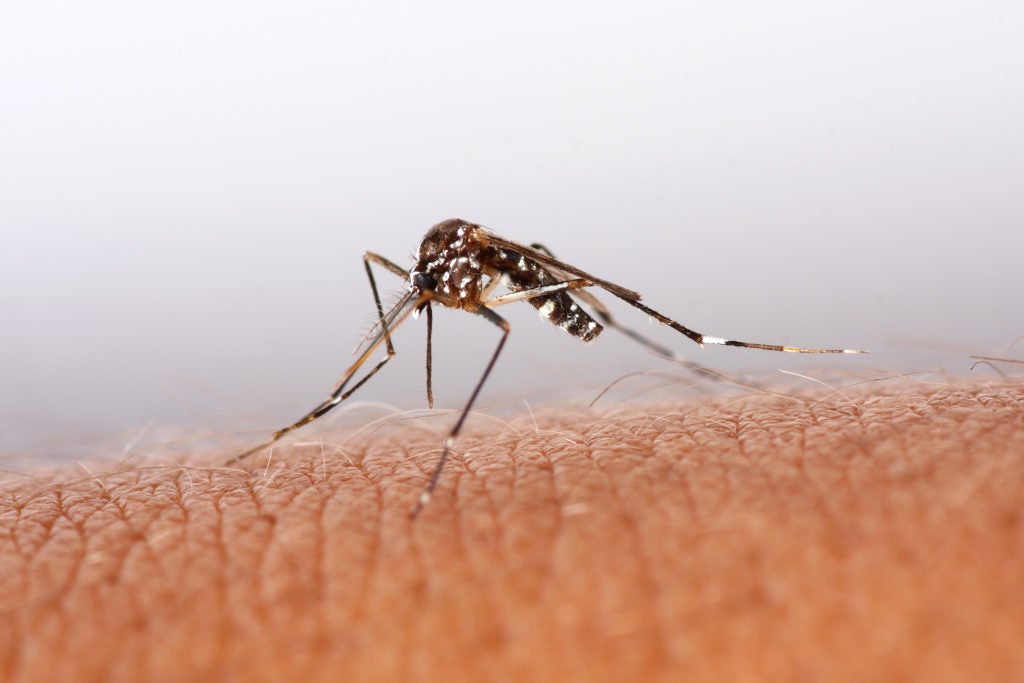The Most Common Bug Bites and How to Treat Them
July 1, 2024
Categories: Primary Care, Urgent Care
Tags: bug bites, anaphalaxis, bee stings, tick bites
Summer weather is an invitation to spend more time outdoors. From hikes in the park to lazy days on the beach, spending time in nature is where it's at. Unfortunately, summertime weather is also appealing to bugs of all kinds — increasing your chances for bug bites, stings and other mishaps. Let's explore the most common bites and stings in the area, available treatment options as well as how you can lower your chances for bug bites and stings.
Top 3 Bites and Stings
The most common types of bug bites and stings in our area:
- Mosquito bites
- Tick bites
- Bee and wasp stings
Treatment for Bug Bites and Stings
Mosquito Bites
Mosquito bites are, perhaps, the most common type of bug bite. While it’s usually nothing more than a nuisance, at times, it can prove dangerous since many viral illnesses are spread by mosquito bites, especially if bitten while travelling internationally.
Your primary care provider and the Center for Disease Control (CDC) are great sources of information to help you prevent infections and stay healthy while traveling.
Treating Mosquito Bites
-
Wash mosquito bites with soap and water.
-
Apply hydrocortisone one percent cream for itching.
-
Ice the area to decrease itching and swelling.
-
Keep nails clean and short to prevent introducing infection by scratching.
-
If itching is severe, use an antihistamine medication. These are available over the counter.
Bee and Wasp Stings
Bees primarily use their stingers to defend their hive, rarely resorting to them while foraging. However, they may sting if they feel threatened, such as when being swatted at or stepped on. So, be mindful of your surroundings, and if you're approached by a bee, stand still for a moment to give them time to flutter away. To avoid attracting bees and wasps, refrain from wearing vivid colors, especially white or yellow. Additionally, avoid using scented products, such as perfume, cologne or deodorant, which can be alluring to these insects. You don't want to be accidentally perceived as an attractive flower worthy of pollination, so take measures to protect yourself while enjoying the outdoors.
Treating Bee/Wasp Stings
After a bee or wasp sting, you should take the follow steps:
-
Remove the stinger from your skin as soon as possible.
-
Wash area with soap and water.
-
Treat local irritation, redness, swelling and itching at the site with a cold compress as well as elevation — if bitten on an extremity.
-
Use ibuprofen for pain, an antihistamine medication for swelling and itching as needed.
If swelling is very large or if symptoms don’t start improving over the next 48 hours (as most reactions should), visit your primary care physician or urgent care.
Head to the Emergency Room, or Call 9-1-1 If…
-
You develop symptoms of anaphylaxis (a severe allergic reaction), such as generalized hives, tongue and/or lip swelling, hoarseness, vomiting, dizziness or shortness of breath/wheezing
-
Symptoms are severe or you pass out.
If you have had a severe reaction to a sting before, discuss this with your primary care physician or allergist to make a plan for prevention and treatment in the future.
Tick Bites
There are ways to protect yourself from tick bites while enjoying time in nature or doing yard work.
For protection against ticks:
- Apply insect repellent containing DEET, permethrin, or picaridin.
- Put on light-hued clothing to make ticks more visible.
- Insert the bottoms of your pants into your socks to prevent ticks from crawling in.
- Steer clear of areas known for tick infestations.
- Conduct daily tick checks for yourself, family members and pets, removing any detected ticks promptly.
Treating Tick Bites
-
Remove the tick with tweezers as soon as possible, trying your best to avoid twisting or crushing the tick.
-
Wash the area with soap and water.
-
Watch the area for development of a bullseye rash in the following 30 days.
Note what the tick looks like (color, white spot, size, engorgement). Why? Different ticks carry different infections, and this information is helpful for diagnosis. Presently, North Carolina does not have a very high rate of Lyme disease; therefore, preventative treatment for Lyme disease is not recommended. The CDC has excellent information on its website about tick bites and tick-borne illnesses.

Preventing Mosquito & Tick Bites
Remember, the most effective mosquito and tick prevention is wearing long sleeves, pants tucked into socks when in high risk areas (i.e., areas where there is standing water). You may also use permethrin-treated clothing and/or DEET or picaridin repellents on exposed arms and legs. If using repellents on children, it is very important to wash their hands after application to avoid ingestion.
Check yourselves and your children for attached ticks after spending time outdoors, as the best prevention is early removal of attached ticks.
About WakeMed Primary Care
WakeMed Physician Practices features board-certified primary care, internal medicine and family medicine physicians conveniently located throughout the Triangle.
Our exceptional and compassionate providers and care teams pride themselves on developing long-term relationships with their patients and their families. Specializing in:
- Chronic disease & medication management
- Annual check-ups & screenings
- Acute illnesses like flu, cold, sinus infections and sore throats
- Mood & depression assistance
- Physician-directed weight loss
- And much more
We look forward to caring for you and your family and to being your family's medical home. Call or schedule online an in-person or virtual visit with one of our primary care providers.
About WakeMed Urgent Care
WakeMed Urgent Care offers a wide range of adult and pediatric services for patients ages 4 months and up with multiple locations and specialty services to serve you.